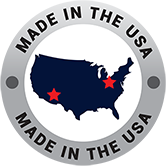K Type Thermocouples
Thermocouples are temperature sensors that work based on the principle of the Seebeck effect, discovered by Thomas Johann Seebeck in 1821. The Seebeck effect states that when two different metals are joined at two junctions, and there is a temperature difference between the junctions, an electromotive force (EMF) or voltage is generated across the metal junctions.
Thermocouples consist of two different metal wires joined at one end, forming the measurement junction, and the other ends are typically connected to a measuring instrument or controller. The choice of metals depends on the temperature range for which the thermocouple will be used. Different combinations of metals result in different types of thermocouples, each with its own temperature characteristics.
When the temperature at the measurement junction (hot junction) is different from the temperature at the other end (cold junction or reference junction), a voltage is generated across the thermocouple wires.
The magnitude of the voltage is proportional to the temperature difference between the hot and cold junctions.
The generated voltage is typically in the millivolt range. The voltage is then measured using a voltmeter or other instrumentation capable of reading low-level signals.
The voltage output can be converted into temperature using standard reference tables or mathematical equations that correlate the voltage with temperature for the specific type of thermocouple.
A Type K thermocouple is a type of thermocouple that is commonly used for temperature measurement in a wide range of applications. It is part of the standardized thermocouple types defined by the American National Standards Institute (ANSI). The Type K thermocouple is known for its versatility, wide temperature range, and reliability, making it one of the most widely used thermocouples.
The Type K thermocouple is composed of two different metal alloys: chromel (a nickel-chromium alloy) and alumel (a nickel-aluminum alloy).
Temperature Range:
Type K thermocouples have a wide temperature range, spanning from approximately -200°C to 1,370°C (-328°F to 2,498°F). This broad range makes them suitable for various industrial and scientific applications.
Applications:
Type K thermocouples are commonly used in industries such as manufacturing, petrochemicals, food processing, and research. They are suitable for measuring temperatures in ovens, furnaces, engines, and other high-temperature environments.
Color Code:
Type K thermocouples are typically identified by a color code. The positive leg (chromel) is usually yellow, and the negative leg (alumel) is usually red.
Cleveland Electric Labs (CEL) assumes a pivotal role across various industries, underscoring its significance in the field of electrical engineering and technology. Acknowledged for its innovative contributions, CEL stands as a driving force in advancing diagnostics, protection, and monitoring within power systems. The company’s state-of-the-art products and services have proven essential in enhancing the efficiency, reliability, and safety of electrical systems across diverse applications. CEL stands out through its unwavering commitment to research and development, positioning itself as an industry leader renowned for delivering high-quality solutions tailored to the evolving needs of its clients. Beyond its technical expertise, CEL actively contributes to the promotion of sustainability and resilience in electrical infrastructure. With a steadfast dedication to excellence, Cleveland Electric Labs serves as an indispensable partner for organizations seeking cutting-edge electrical solutions and technological advancements.



